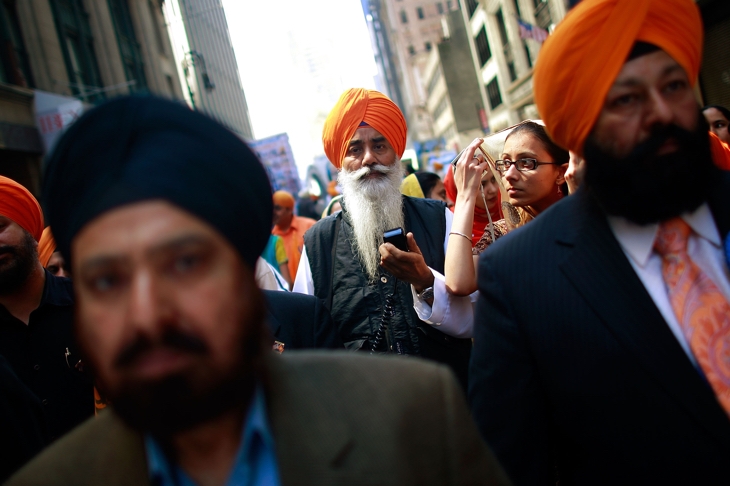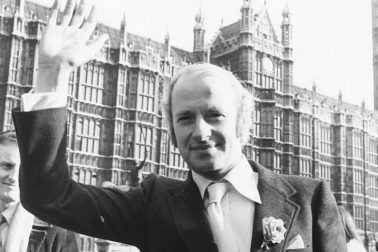In April each year Sikhs around the world celebrate Vaisakhi. While it marks the Indian spring harvest, the festival has a much deeper significance for adherents of Sikhism – it commemorates the birth of a nation of warrior-saints.
Over the weekend some of Britain’s 423,000 plus Sikhs began these festivities with impressive street processions called Nagar Kirtans in both London and Glasgow. The latter included a beturbanned bagpipe player to boot. It’s a family friendly affair, with an abundance of free food (langar), martial arts displays (gatka) and speeches from ‘community leaders’ and politicians. But it’s the story at the heart of Vaisakhi — the life and death struggle for India’s freedoms — which doesn’t always get the recognition it truly deserves.
In 1699, in the face of constant Mughal aggression, Sikhism’s 10th Guru, Gobind Singh formed a military fraternity called the Khalsa. Setting the democratic foundation of modern day Sikhism, the Khalsa blended a routine of spiritual practice with matters of self-defence, while pushing back the tide of Islamic expansionism. India’s new ‘sword arm’ was a truly egalitarian melting pot. Open to all, regardless of caste, creed or denomination, men baptised into the Khalsa were given the name ‘Singh’ (lion) and women ‘Kaur’ (princess). Each prepared to give the ultimate sacrifice to defend India’s waning freedoms. To this day Khalsa Sikhs wear 5 articles of faith – colloquially called the 5Ks. These include unshorn hair (kes), which men wrap in a neat turban.
The Guru’s story gives endless inspiration – he was after all a saviour of swords. Despite losing his father, who was beheaded by Emperor Aurangzeb for refusing conversion to Islam, and his four sons (the younger two bricked alive) Gobind Singh didn’t vilify, tarnish or demonise any of the adherents of Islam. Instead he explicitly instructed Sikhs to, ‘recognise the human race as one’. Centuries on, the religious fanaticism that ravaged medieval India lives on to haunt Coptic Christians in present day Egypt, threatening their very existence.
When it comes to religious literacy though, I’d argue that most people are better acquainted with Islam than Sikhism. This is partly because the former features more frequently in the news due to the actions of extremist Muslims, and perhaps because Sikhs – unlike Christians or Muslims – don’t proselytize. However, I take some comfort that in Britain at least, we understand diversity much better than across the pond.
In 2013 the Sikh American Legal Defense and Education Fund (SALDEF) published a study conducted in collaboration with Stanford University about Post 9/11 ‘turban myths.’ A staggering 70 per cent of Americans couldn’t identify a Sikh man in a turban as a Sikh, and almost half believed that ‘Sikh was a sect of Islam.’As Sikhs well know this perception has had some terrible consequences with so-called mistaken identity attacks.
Professor Eleanor Nesbitt of Warwick University is on the editorial board of Fieldwork in Religion and Religions of South Asia, and an expert on Sikhism. On Vaisakhi, she told me: ‘Sikhs celebrate their history of distinctiveness from Hindus and Muslims, coupled with their self-sacrificial solidarity with humanity as a whole.’ She goes on: ‘It is an ironic twist that their intentionally distinctive appearance attracts not only racism, but more specifically, Islamophobia, in an escalation of cases of mistaken identity.’
Last week I was encouraged to see the Canadian province of British Columbia followed in Ontario’s footsteps by proclaiming April as Sikh Heritage Month. It’s perhaps not sustainable to devote every month in the calendar to a particular religion. But initiatives like these can only serve to improve religious literacy while dispelling ‘turban myths’. I think most will find the message of Vaisakhi to be universal. A Serbian friend of mine summed it up in a few words – ‘stand up and be counted.’






Comments